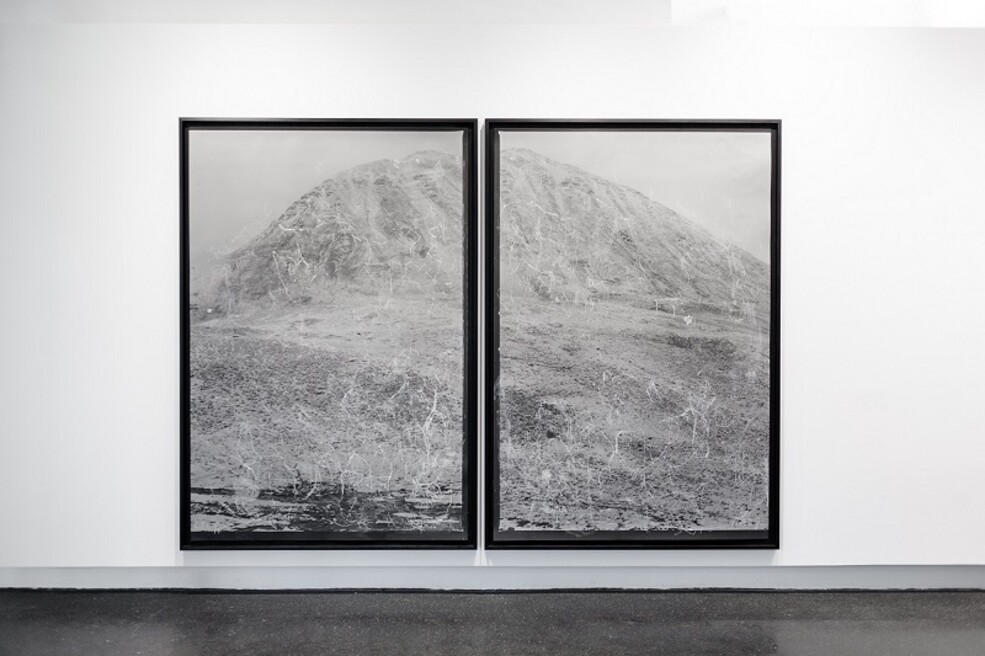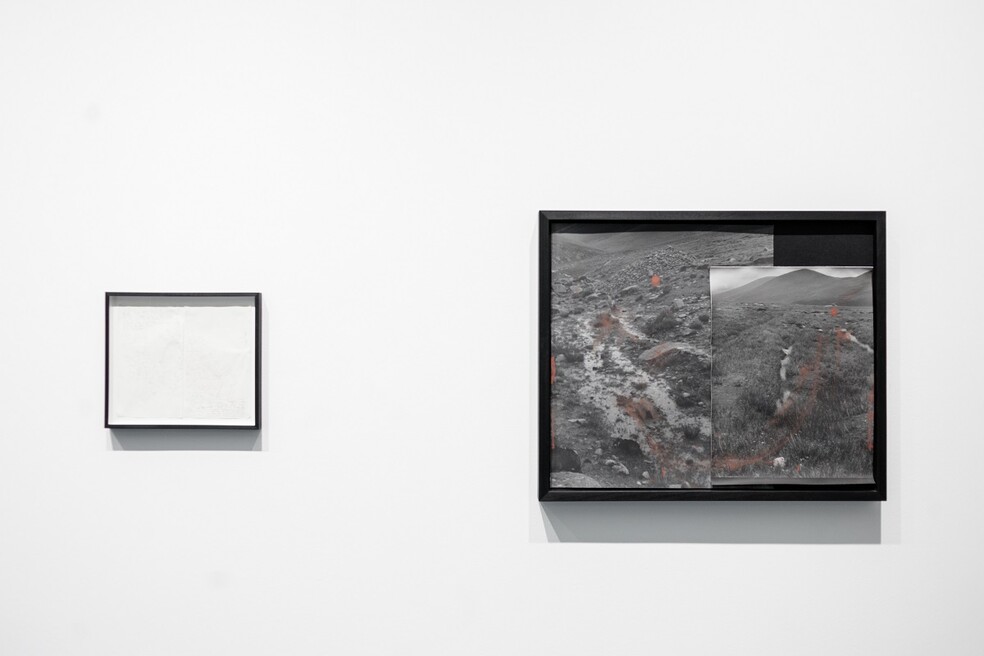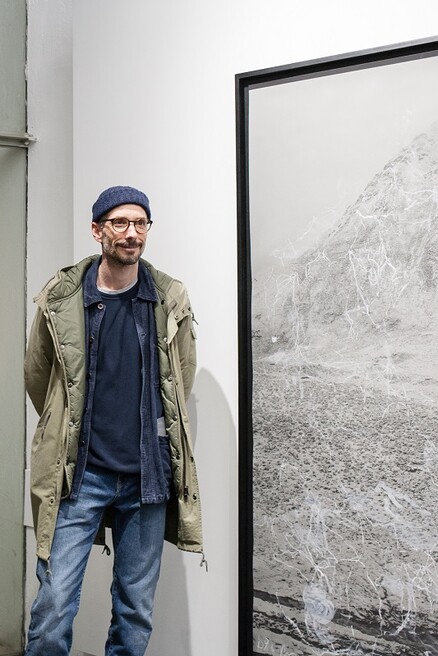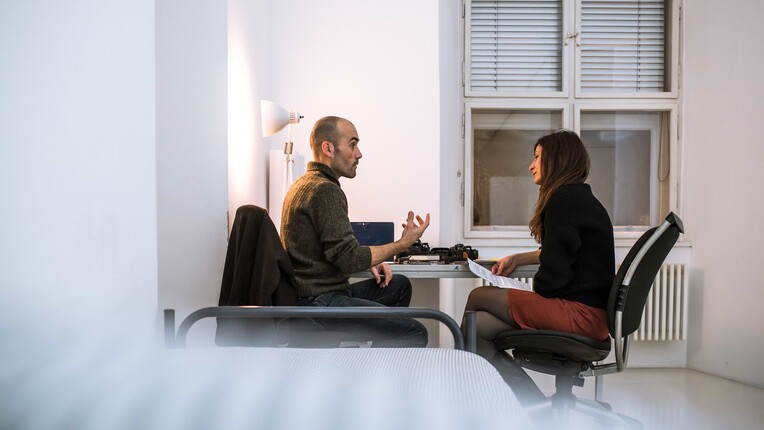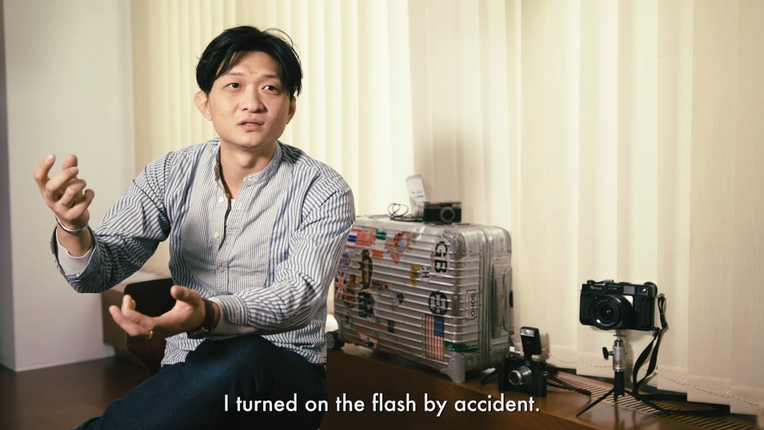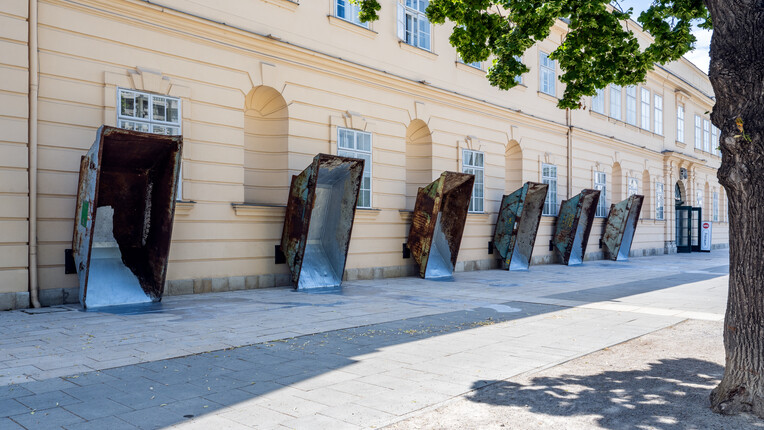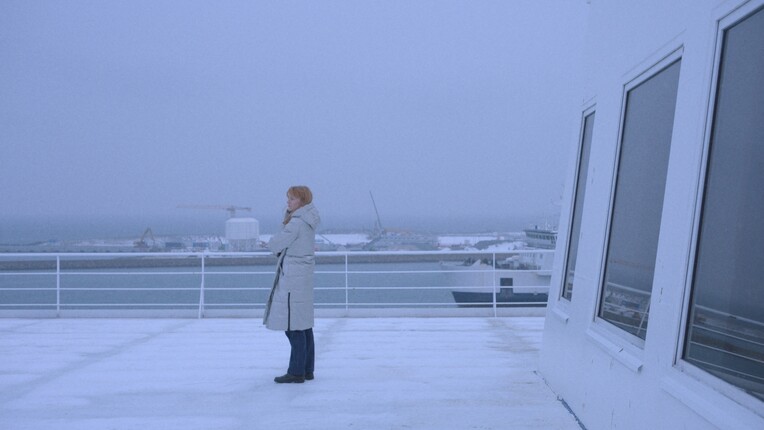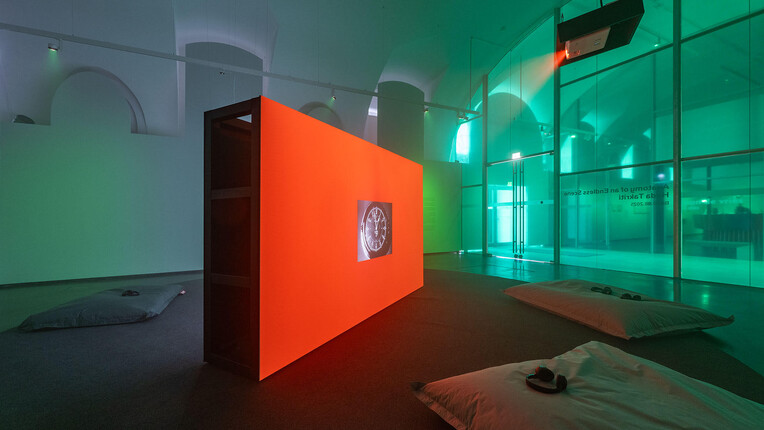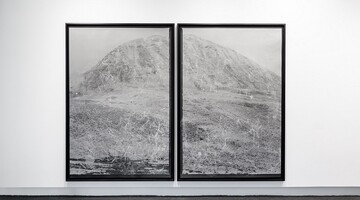
"No preconceived images in mind"
Artist Michael Höpfner in conversation with Nela Eggenberger (EIKON) about his exhibition "From Ruthok to Lhamo Latso" at EIKON Schauraum.
EIKON Schauraum, newly reopened just before the coronavirus lockdown, presents Michael Höpfner, an artist who has been dedicated to the practice of walking for many years - often in remote places like the Tibetan highlands. Since the exhibition ‘Von Ruthok nach Lhamo Latso‘, like so many others, was forced to close on short notice, Michael Höpfner and Nela Eggenberger met online to discuss the exhibited works. The showroom at Q21/MuseumsQuartier Wien will reopen to visitors on 15 May.
Nela Eggenberger: What makes you such an avid walker?
Michael Höpfner: I want to roam in nature - on my own initiative, with only a few utensils. I stand on the earth and move, thus I walk. I want to explore this entire world on foot. It is a mystery how man connects time and space, near and far in his own being - this is what I pursue. Simple as that.
NE: On average, how many trips do you take per year – when there are no travel restrictions?
MH: I have never paid attention to the number of days I was on the road. I don’t want to be a ‘collector of countries’ or a frequently travelling global artist. Some years, I only took hikes starting from my studio. Then, for more than seven years, I spent six to seven months of the year wandering landscapes that were fascinating to me. As I mentioned, the time and the energy to embark on a journey - with your own body, mind and senses – are crucial to me. Art emerges from this strange connection. The current restrictions do not affect nature or my legs.
NE: You capture impressions from your trips, often lasting several weeks, in analogue photography and drawings. Why did you decide to work with media that almost seem a bit antiquated?
MH: There are several reasons. For one, I sometimes hike for many weeks and don’t have access to power for recharging the batteries - so I resort to analogue cameras and film. Another reason: Even as a student, I never wanted to invest too much time in media. To me, learning new techniques is mostly a waste of time. I’d rather go outside – that’s why I draw or use b/w photography. Both I can do in a tent or at home. I get the pictures I want directly, without any intermediate steps or the help of others. My equipment is reduced to the basic essentials, nothing can break. I like that. I want to be able to focus on my steps and my observations, not on my tools or media (e.g. photography). Of course I reflect on how I can utilise my equipment. Working with analogue film limits the number of pictures - I liked that from the start: having 20 films, twelve negatives each, for a 3-month-hike.
NE: The photographs currently displayed at EIKON Schauraum are more than 15 years old. Why resort to material that was created such a long time ago?
MH: I took that hike in August 2004. Six months later, I developed the films. I have looked at the negatives time and again, stored them, and finally rediscovered them in 2020. Walking is an intense experience written into my body. Often, I grasp intuitively that something I have done is important – but I do not know yet why. Our relationship with nature is mysterious, there may not be any answers. Sometimes there is nothing to tell, only trivial things like: It was cold, I was alone, I was lonely. And sometimes I don’t know how this experience can manifest in a picture right away. It takes time, often I return to these places years later, I start walking from different directions and find my own invisible trails. Then I remember and try to arrange the fragments into a whole. The same goes for my work at EIKON Schauraum. It presents a moment of great tension: Early morning, I am leaving my snowbound tent to walk along a hill at 4800 metres altitude. I observe it, I speak to it, to myself. I want to capture these steps, this panorama. I take two pictures, with a 30-minute-interval. That’s it. In my recent work, I draw over the photos with chalk, a dusty material. Sometimes I use my fingers, intuitively retrieving the moment.
NE: How did you prepare for your trip to Tibet? What information did you gather, or could you gather in advance?
MH: I have been to Tibet 15 times so far. In 1997, when I was a student, I walked the trails of Ladakh. Then, I spent three months hiking in Nepal on a scholarship, where I was able to see Tibet from a mountain pass. If you have experienced something like this yourself, you know that such observations or images can change your whole life. So I went to Kathmandu to gather info, and six months later I was already on my way across the border, bound for Lhasa. I had a guidebook on Tibetan hiking trails, written by a Taiwanese man in the 1980s. It became the base of my hiking trips. But this meant that I was following trails that were described with words, that I had to ‘read’ these trails. For instance: ‘Walk this valley in the direction of north-west. You will find a pyramid-shaped hill on the left and a pile of rocks on the right. There, follow the vague trail markings for one day.’ It was important to me not to have any preconceived images in my mind - not even maps. Nothing. As a matter of fact, there were no maps. Back then, Google Maps looked like a Jackson Pollock painting. That’s how I learned to observe only nature, and to follow my human intuition. Because the people there, most of whom are semi-nomads, live below nature - not in harmony with it. This is their approach to nature – and a legitimate notion, if you like. So, I did not prepare. I had the luxury of time, I had the chance to find what I was looking for. Many of the paths I followed were pilgrim routes or caravan routes, where you can find nomad camps. I did not want to start an expedition, I wanted to walk alone and be independent.
NE: Do you usually plan a precise route? And does it follow a specific concept, e.g. a set number of kilometres per day?
MH: When I was younger, I used to dive into conceptual ideas, trying to follow the directions of concept art. Unfortunately, it never worked. I am not that person. I wanted to break free instead of falling into pedantry about step counts or kilometres. I didn’t want to simply connect points A and B with my steps and keep records. So I prefer to plan vaguely. The exhibited works from my trip from Ruthok to Lhamo Latso show an ancient pilgrim route. After reaching my final destination - a lake amidst an endless range of mountains in eastern Tibet - I had to walk for two more weeks to reach a settlement. Walking became straying, and I forgot my destination. And that’s exactly what works for me best.
NE: Your escapism seems to be a form of protest against the fast pace of our time. But at the moment, somehow it seems that time is standing still for us all. Does this shed a new light on the quality of a slower pace?
MH: I have never considered myself an escapist, but rather a doubter: I want to continue walking the earth, assure myself, see for myself, be there myself. Walking creates another perception of time - maybe a more human one. Protest? Yes, but alone, through silence. Of course, these days I am fascinated by how we don’t go out into nature and nature is coming back to us instead. How it spreads chaos in our bodies and makes clear: Time is not an invention of modern man.
NE: Where will your first path lead you once Austrian borders are open again?
MH: I will take a hike from Trikala in northern Greece to the head of the Aoos/Vjosa river. Then, I will follow this river to and through Albania until I reach the river mouth on the Adriatic Sea.
